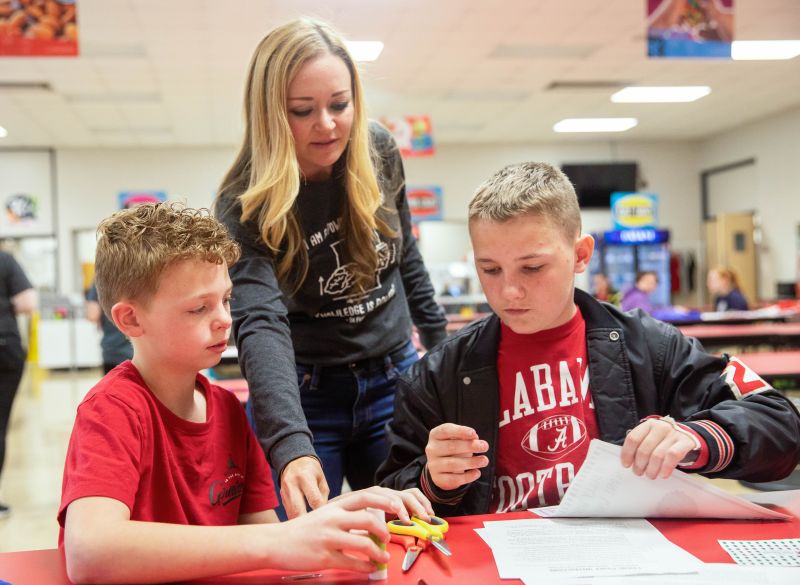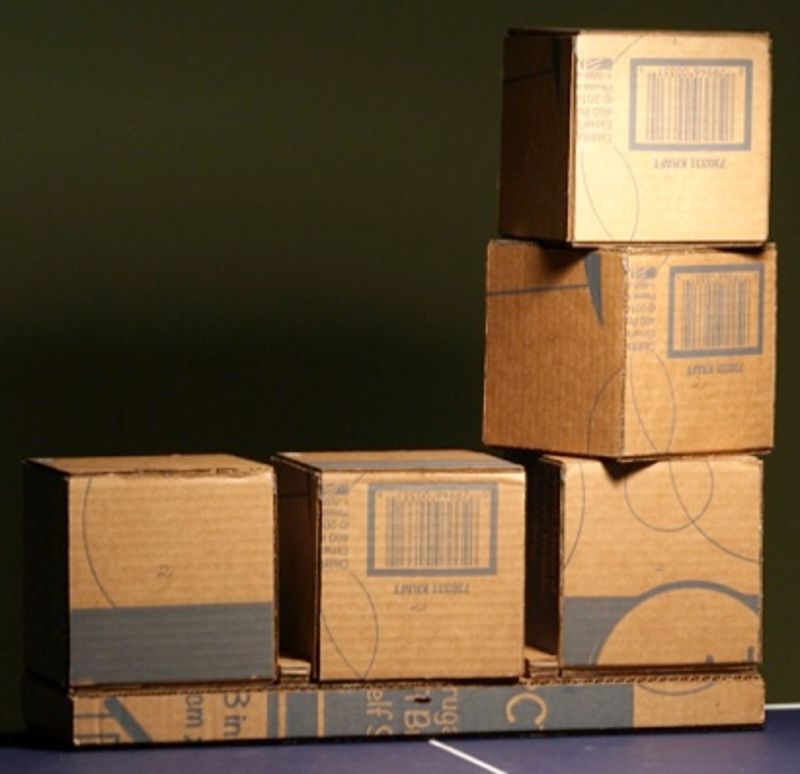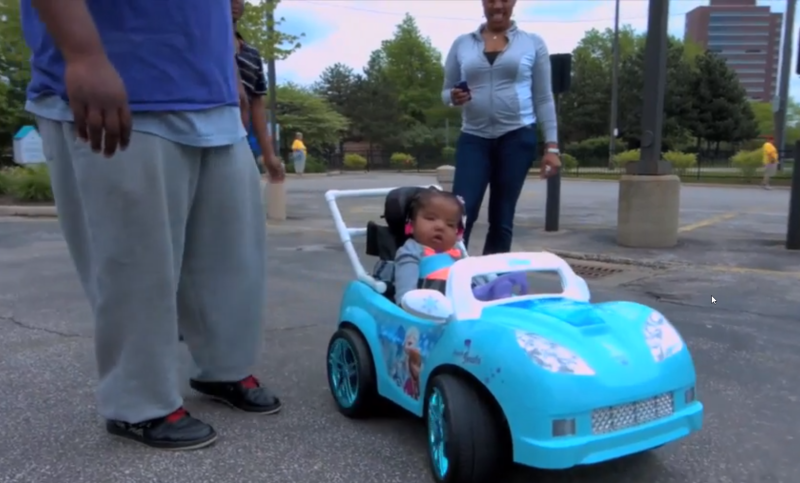
4 ways science is helping kids lead healthier, happier lives
Reducing bullying and risky photo sharing with behavioral science, understanding spatial thinking with AI, and using robot swarms to help mobility-impaired kids. These NSF-supported projects are expanding our understanding of childhood development and how to help kids learn and grow.
When a child comes home from school with a twinkle in their eye, sparked by some new knowledge about dinosaurs or a classroom chemistry experiment, it’s a reminder of how science can be such a wonderful influence in their lives. But that immensely beneficial influence goes much deeper than daily school lessons and homework.
For example, more than 60 years ago, the Supreme Court unanimously ruled in Brown vs. Board of Education that racial segregation in schools is unconstitutional. A key factor in the court’s decision was the scientific research and expert testimony of two psychologists, Mamie Phipps Clark and Kenneth Clark, who studied the psychological effects of segregation on Black children. Their trailblazing work exposed the damage inflicted by racial prejudice on the development and mental health of young children.
The Clarks’ findings contributed to profound changes in how children are educated in America. Decades later, the passion and determination that drove their research is alive in the modern and oftentimes high-tech psychology and developmental sciences labs where many NSF-supported researchers are still striving to help kids through scientific exploration.
Less bullying, more friendship
Education professor Sandra Graham has studied the causes and effects of bullying in schools for over 20 years. “Bullying is a serious public health concern,” Graham says. “There are a lot of physical, psychological and academic challenges that come with being the victim of bullying.”
Any adult who was bullied as a child can remember that intense feeling of dread in the pit of their stomach as they walk into a school restroom or head outside for recess. That stress can have a significantly negative impact on how, or if, a child learns. A 2010 study by Graham’s UCLA colleagues analyzed the effects of bullying on the academic performance of more than 2,000 students in public middle schools. They found that kids who were bullied can experience an average drop of 1.5 letter grades on their report card — the difference between acing a class and just getting by with a C.
“If you’re spending all your time worrying about whether you’re going to be picked on, you don’t have enough cognitive and emotional resources left over to do well in school,” explains Graham.
While anti-bullying programs and interventions have been around in schools for years, the issue of bullying stubbornly remains. Graham’s current NSF-supported research project will test a new approach to reducing bullying by taking a different tack. Partnering with psychologist Leslie Echols at Missouri State University, their project incorporates fundamental discoveries from social and behavioral science that reveal the underlying conditions that lead to bullying and the psychological levers that can stop it.
The program has three complementary components, each addressing different aspects of how bullying begins and spreads in schools. The first component is a new curriculum aimed at stopping the oftentimes self-destructive behaviors adopted by victims of chronic bullying. The second uses experimental techniques designed to help victimized children gird themselves with a powerful asset proven to reduce the consequences of being bullied — a friend, even if only one. The third component seeks to change the social norms in schools which can lead to bullying being accepted. It focuses not on teachers or administrators, but those who truly establish a school’s social norms: influential peers.
If the Ferris Bueller of the school demonstrates that bullying is not acceptable, then odds are most other kids will do the same. “Ultimately, kids need to learn to be tolerant of people who are different from them,” says Graham.
Graham and Echols plan to test the new program in two demographically different areas: urban schools in Los Angeles and rural schools in Missouri. The program will run for three years and could help teachers, school leaders and policy-makers develop effective, evidence-based methods that any school in the U.S. can use to stop bullying.
The photo sharing paradox
In the digital realm, many children and adults are immersed in a sea of interactions within various social media platforms, games, communication apps and group texts. In many of those spaces, sharing photos with both peers and strangers is common practice. But do the sharers consider the potential harm that can be inflicted when a photo depicts another person in an embarrassing or degrading way?
A study published in 2020 investigated that question – or rather, the effect of asking it. A multidisciplinary team, including cognitive neuroscientist Bennett Bertenthal, psychologist Kurt Hugenberg and computer scientist Apu Kapadia, conducted an experiment that tested how likely adult participants were to share a photo meme after receiving a message asking them to consider the privacy and security of the person depicted in the photo. The results were surprising.
“It backfired,” says Bertenthal. “Participants who received warnings asking them to consider the privacy and security of others were more likely to share photo memes than participants who did not receive the warning.”
The researchers expanded their online experiment in a 2021 study and again observed the same paradoxical phenomenon. Photo sharing likelihood among many of the participants increased after viewing a warning message asking them to consider the privacy of the photo’s subject or to imagine themselves in the place of the photo’s subject.
While Bertenthal and his colleagues do not fully understand why online warning messages frequently backfire, they are assessing new behavioral and technical interventions that could be more effective. “We know that photo sharing has often facilitated cyberbullying, shaming and abuse,” says Bertenthal. “Our goal is to develop effective interventions that reduce the likelihood of harmful photo sharing and protect people of all ages.”
Smart blocks, smarter learning
Lego bricks, Lincoln Logs and other building toys are indelible icons of childhood. Besides fun memories of building spaceships and castles, those toys also help kids gain something else: spatial thinking.
“Our ability to think spatially is one of those things we take for granted,” says Northwestern University psychologist David Uttal. “Yet almost all of our daily interactions involve space.” Beyond navigating to the grocery store or safely crossing the street, spatial thinking is also critical in how children learn, particularly in mathematics and other STEM subjects.
The familiar number line poster in so many elementary school classrooms is a spatial representation of the otherwise abstract concept of numbers. From elementary school arithmetic to understanding complex organic molecules, spatializing information greatly facilitates thinking and learning, says Uttal.
In collaboration with Michigan State University computer engineer Subir Biswas, Uttal is combining cutting edge technology with a centuries-old toy to better understanding how children develop spatial thinking. They are making “smart blocks” by upgrading conventional blocks with electronic sensors so the blocks’ movements and position are precisely recorded over time. But why blocks?
“Block play has been part of early childhood education programs for centuries,” says Uttal. So-called block design tests are frequently used to assess spatial thinking abilities in children. Test-takers attempt to replicate visual patterns by arranging colored blocks to match. Such tests evaluate speed and accuracy – but not method. For example, if a child used a creative or novel strategy, the test result wouldn’t reflect that. In comparison, the smart blocks will record all the steps children take in creating block arrangements, including any setbacks or sudden breakthroughs.
To identify meaningful patterns in all that block-building data, Uttal and Biswas will employ a very different type of intelligence — the artificial kind. “By tracking movement and how multiple blocks are handled in a group, we can facilitate machine learning to highlight patterns of block building and play,” explains Biswas. Thus, expanding our understanding of the underlying cognitive processes of spatial thinking abilities and the STEM-related benefits they imbue.
The researchers also plan to explore how teachers and parents can more effectively guide children who are learning spatial thinking, such as when adults should give helpful cues to children who are struggling with a spatial puzzle and when they should just let them figure it out on their own.
Kicking, climbing, biting, grabbing, falling, leading
Cole Galloway wants to get children moving and exploring. As a developmental psychology and physical therapy researcher at the University of Delaware, he studies the explosive cognitive development that occurs in babies when they begin to crawl, walk and explore. But for children who struggle with mobility due to conditions like Down syndrome and cerebral palsy, those movement-fueled cognitive advances may be significantly delayed or reduced.
“The brain and the body alone are not enough,” explains Galloway. People need interaction with the world and that requires mobility. Aware of his work, parents and caregivers of young children with neurological conditions contacted Galloway. “They came to my talks, they stayed after, they left me messages saying, ‘we need your help, and we need it right now,’” he remembers.
A high school intern in Galloway’s lab came up with a transformative idea: modify off-the-shelf battery-powered toy cars so immobile children can drive them around and thus jumpstart their cognitive development. They published the instructions and hardware list on social media and Go Baby Go! was born, a distributed organization providing modified cars for children with mobility issues. There are now more than 100 Go Baby Go! chapters in the U.S. with thousands of volunteers, many of them high school STEM students, modifying cars for young children and giving them the ability to explore.
Expanding on lessons learned through Go Baby Go!, Galloway has teamed up with robotic systems engineer Bert Tanner to create a new way to engage children with neurological disorders and get them moving and playing with other kids. Tanner’s system uses a “swarm” of small, spherical robots that dynamically interact with the child to encourage mobility. The researchers are starting with young children without neurological disorders, with the hope of training the robot swarm to gently guide children with and without mobility impairments to play with each other.
“We want to create a dynamic ecosystem of play for children of all abilities,” says Galloway. “If it works, we should be able to see clear changes in mobility, cognition and social communication in babies such as those with Down syndrome.” As with the toy cars of Go Baby Go!, the robots are cost-effective, making it feasible for caregivers, STEM teachers and students to acquire them.
For Galloway, cognitively-enriching movement and playtime are just the beginning. “Movement is a means to an end,” he says. Decades ago, the Clarks blazed a trail in their field as Black scientists leading research focused on Black children. Similarly, Galloway envisions a future where people in the disability community are not only the subject of research, but also its leaders. “The phrase ‘nothing about us without us’ has got to become a mantra for the modern researcher,” says Galloway. “We need people with lived experiences of mobility issues to actually direct this work themselves and train other scientists.”
“NSF is focused on things that can have big impacts on our world,” he adds. “So to me, that’s a very National Science Foundation sort of thing to do.”








